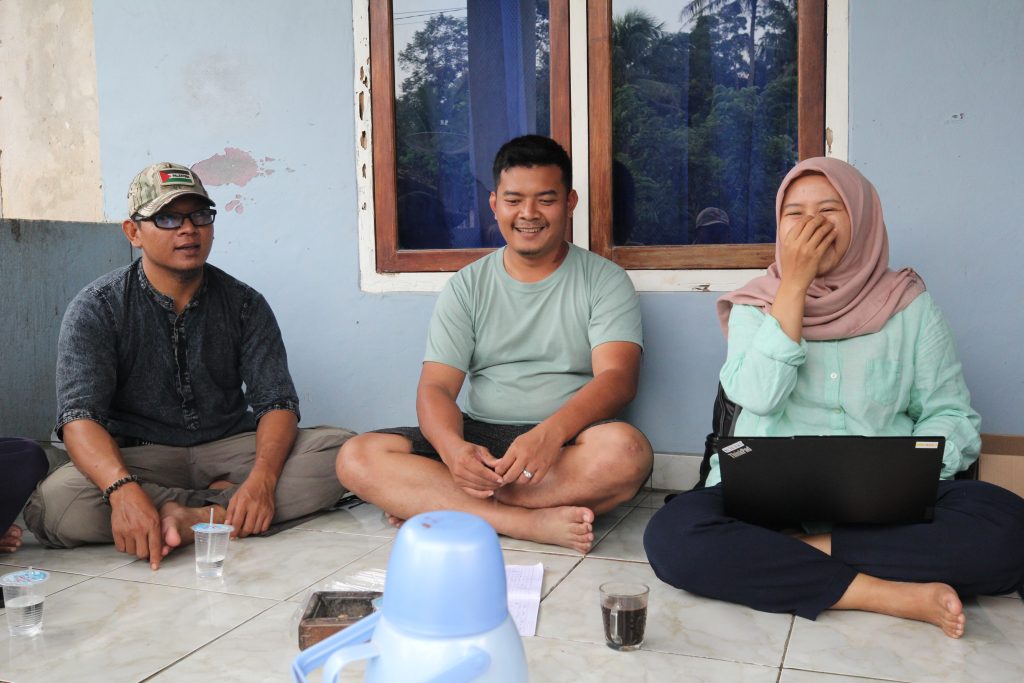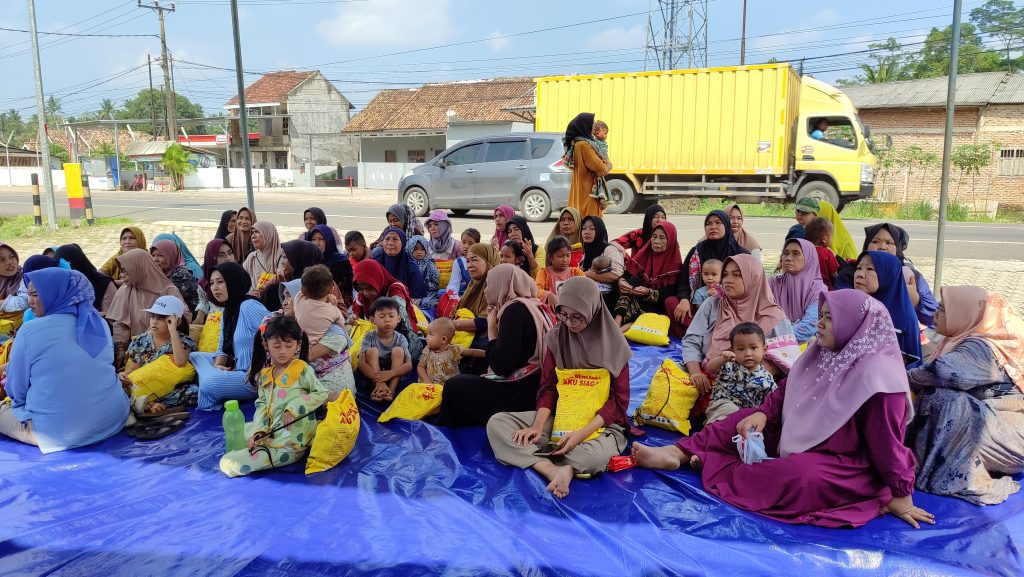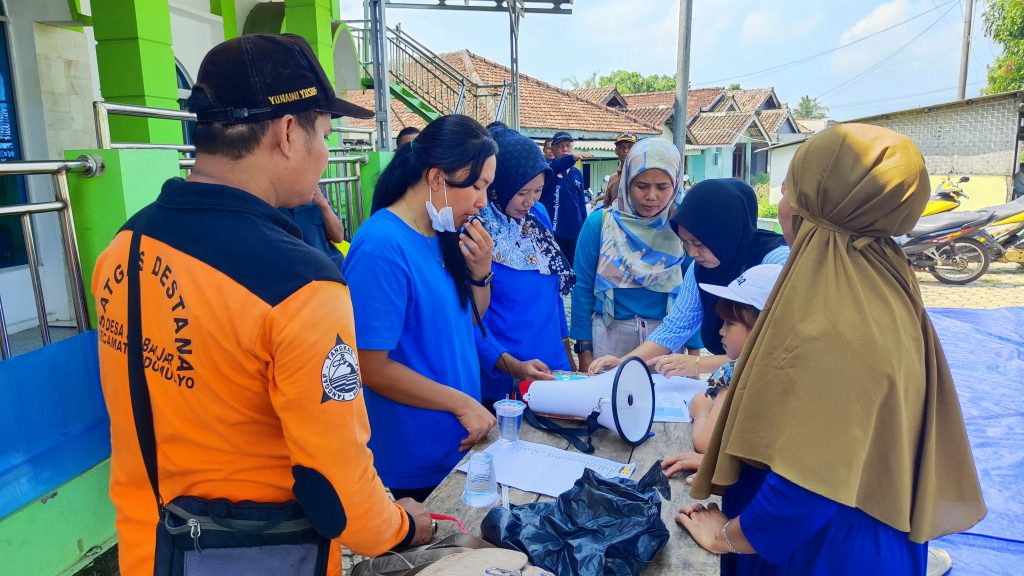For a village that must prepare for overflowing rivers every rainy season, flooding has become a recurring threat. In Sukabanjar Village and Talang Baru Village, South Lampung District, this condition has long been part of the communities’ lives. However, until recently, they did not have official guidelines for action when early disaster warnings were issued. This is where the interesting story of the development of the AA (Anticipatory Action) Protocol began.
This activity is part of the PASTI II programme, implemented by Arbeiter-Samariter-Bund South and South-East Asia (ASB S-SEA) with support from Aktion Deutschland Hilft (ADH). Through this programme, residents of the two villages had the opportunity to develop their own disaster preparedness guidelines tailored to their circumstances.
AA/AMPD: A New Concept in Indonesian Disaster Preparedness
When early warning information about a possible disaster is issued, for example, heavy rain is expected to fall for days and rivers are beginning to overflow, the government and the community do not sit idly by. They immediately prepare: moving livestock, setting up evacuation sites, and ensuring that communication channels are secure. This is known as Anticipatory Action (AA), or Early Warning Response Action (AMPD) in Indonesian terms.
In Indonesia, this concept has not been around for very long. In BNPB (National Disaster Management Agency) Regulation No. 2 of 2024, AA/AMPD is described as a series of actions taken to anticipate the impact of disasters, save lives, and reduce losses and damage. These actions are taken before the disaster actually occurs, specifically during the emergency alert phase when an early warning has been issued.
AA focuses on predictable disasters, such as floods, droughts, or extreme weather. This way, the community has the time and space to act more quickly to protect themselves, their property, and the environment before the disaster strikes.
First Steps: From Ignorance to Interest
When the PASTI II team first came to introduce the term AMPD protocol, some communities frowned. ‘They had never heard this term before,’ said Lia Yuliana, PASTI II Project Officer responsible for the drafting process in the two villages. In fact, even members of Destana (Disaster Resilient Villages) had minimal knowledge about disasters.
However, instead of being indifferent, the residents showed great curiosity. They attended every socialisation and training session, wanting to understand what AA was and how this protocol could help them. ‘The village government and community were very open. They wanted to learn and contribute,’ recalled Lia.
From this process, lively discussions arose about how floods often cut off road access, how school children had to be evacuated, and how mothers prepared whatever logistics they could. These stories became the basis for drafting the protocol, making it a document that also reflected real experiences.
Challenges: Knowledge, Age, and Funding
The process of drafting this protocol was not always easy. The first challenge was the lack of knowledge among communities and Destana. The PASTI II team had to use a simple and contextual approach so that the concept of preparedness could be easily understood.
The second challenge was human resources. ‘Some of the members of the drafting team were very senior,’ said Lia. They were highly motivated, but it took them longer to understand new concepts. The assistance had to be more intensive and patient.
The third challenge, and perhaps the most obvious, was funding. When the protocol was activated, there were no immediate sources of funding available. The team and residents had to think of ways to ensure that activities could continue despite the limited budget. This led to creative ideas such as using residents’ contributions, involving local donors, or integrating the funding plan into the village budget (APBDes).
From the Communities, By the Communities, for the Communities
Despite the challenges, the end result made Lia and the PASTI II team feel satisfied. The AA protocols in both villages were developed entirely by community representatives, Destana, and the village government. They themselves determined who would serve as the main implementers, who would be responsible for logistics, evacuation, communication, and disability services.
“When the community members themselves formed and determined the team, a strong sense of ownership and responsibility emerged,” explained Lia.
This was evident during the protocol simulation, where residents played an active role, knew what to do, and helped each other without waiting for instructions from outside.
The simulation was not only a technical test, but also a moment of togetherness. Children learned about evacuation routes, mothers prepared public kitchens, and village officials ensured that the communication system was working properly. All elements of the village were involved.
Valuable Lessons: Participation and Collaboration
From this process, Lia concluded several important lessons. First, the approach must be tailored to the characteristics of the village. Each village has a different culture, way of communicating, and customs. An approach that is too ‘technical’ can discourage communities from participating.
Second, active participation creates a sense of responsibility. When communities are involved from the start, they feel that the protocol belongs to them – not a document from outside.
Third, cross-party involvement strengthens the final result. In this process, the village government, BPBD (Regional Disaster Management Agency), and related OPDs (Regional Apparatus Organisation) played a role. They not only provided input, but also became witnesses and drivers so that this protocol would be formally recognised and could be used in inter-agency coordination. ‘Their involvement made the protocol more inclusive and encouraged the spirit of the drafting team,’ said Lia.
Hopes and Sustainability
After the protocol was drafted and simulated, the next question was: Would the protocol actually be implemented?
Lia was optimistic. Based on monitoring by the AMPD Protocol Working Group in both villages, the prospects for sustainability looked quite good.
Several activities had already been carried out independently by communities, such as training in the use of HT (handy talkies) and regular simulations. All of this is a sign that awareness and enthusiasm for preparedness are beginning to grow.
Even so, the challenge of funding remains a ‘small obstacle’ that needs to be overcome. But for Lia, this challenge is actually a trigger to find creative solutions and build a broader collaborative network. ‘As long as the enthusiasm is still there, this protocol will continue to live on,’ she said.
Challenges that Strengthen
The development of the AA Protocol in these two villages is not merely a technical activity, but a journey of shared learning. It is about how to build preparedness from scratch, the importance of listening to residents, and the power of collaboration.
What initially felt complicated and unfamiliar has now become a source of pride. The challenges that arose actually strengthened the bonds between residents and deepened their understanding of the meaning of ‘preparedness’.
In fact, the protocols in these two villages are among the first village-level AA protocols to be developed and simulated in Indonesia, at a time when the National AA Guidelines were still being drafted.
From Sukabanjar Village and Talang Baru Village, we learn that building preparedness is about fostering a sense of ownership and mutual trust, beyond just documents or procedures. And perhaps, that is the true meaning of the AA protocol as a protocol that builds community resilience from within.




